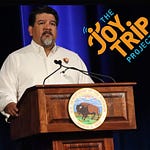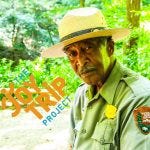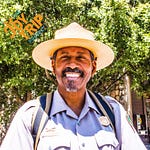For most of his life wildlife photographer Florian Schulz has fought to protect the diversity of animals species around the world. Working in the most remote region of the planet he’s tracked and documented the wild birds of Mexico, big game animals of the African continent as well as the migratory patterns of caribou in the Alaskan Arctic. And it’s in this frozen region known for its vast featureless landscapes where Florian has followed and photographed the great Polar Bears of the northern hemisphere. Florian: It’s really a land of extremes both in temperatures but also in the survival of animals in these harsh environments. And for me that is so intriguing, how the natural world is able cope and adapt to such extreme places. And I found it anything else but a barren wasteland. With patient study after long months in the field Florian has come to a profound understanding of nature’s most delicate balance. By observing large animals musk ox, wolves, moose and grizzly bears he hopes to make those who see his photographs realize that all of these species have a direct relationship with each other, the land and in no small way the survival of humanity. At the bi-annual breakfast meeting of the Conservation Alliance at the 2012 Outdoor Retailer Winter Market in Salt Lake City Utah Florian Schulz was the keynote speaker. Shortly after his presentation he shared with me how he first came to forge an intimate relationship with the harsh and forbidding environment of the Alaskan Arctic. Florian: I realized once I gave the land some time, once almost I got invited in I was starting to be able to see and document things that I would have never dreamt of seeing. But I have to be honest that you won’t go there and immediately just see everything. I mean it’s definitely important that you do spend the time and you don’t too big expectations because it’s a vast open place and wildlife sometimes is very dispersed. JTP: I think that’s actually one of the most compelling things about your work in that not unlike ice it takes a long time to develop. You have to slow it down. I’m interested in finding out how it is that you were able to slow yourself down enough to get a full appreciation for the minute changes that you wouldn’t necessarily see instantly just by being there. How did you find yourself even able to work in the solitude of that area? Florian: I think as a photographer you have it a little bit easier because if you are dreaming of exceptional images that kind of really occupies you. So if it’s a question of how do you get the patience? How do you go to a remote location year after year even though you haven’t been successful in finding the caribou for example? It is because you are envisioning these most spectacular images and that gives you so much excitement that you’re willing to go through the millions of mosquitoes, the freezing temperatures where you’re just really suffering. But that fascination with the images kind of let’s you endure all of that. But I don’t care enough about the suffering like that because you get rewarded with the view of an iceberg underneath the water or, you know, a view of thick bill murres diving as if they were penguins going down into the depths of the ocean. So yeah it’s rewarding. That’s why you can endure it. JTP: The work that you’re doing helped to establish a program called Freedom to Roam and the primary premise as I understand it is to create wildlife corridors through which animal species can successfully migrate for mating, for the gathering of food. How is it that you came to understand the necessity for the establishment and maintenance of wildlife corridors? Florian: If you think about Europe and how chopped up for example the last natural areas there are you very quickly realize that any large predators life wolves, grizzly bears or even things like lynx they get dramatically reduced. They go extinct and so on if these natural areas become small and smaller.
Share this post

Visions of the Arctic
jamesedwardmills.substack.com
Visions of the Arctic
Feb 10, 2012
Recent Posts













Visions of the Arctic